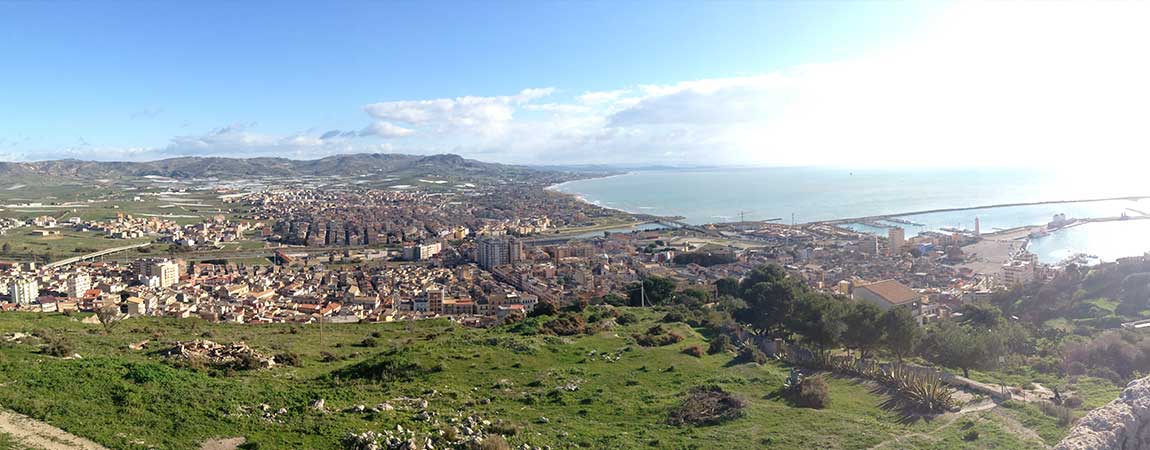
From the historic center to the San Giacomo lighthouse, Licata welcomes and enchants you among stones and gold, colored marbles and the incredible blue of a Mediterranean setting.
La history in Licata it passed leaving its traces in palaces and churches, while today we live in the round, from the historic center of the town to the sports centers in the surrounding area, from archaeological sites outside the city to country farmhouses: discover Licata, history of a village which has become city with its lively present, is all that awaits you in the Free Municipal Consortium of Agrigento.
Licata the story of a village on the Mediterranean
Between Agrigento and Ragusa, in the south of central Sicily, it overlooks the Mediterranean Sea from the Licata coast. Here, right above sea level, man had already laid the foundations for a stable life in ancient times: in fact, there were human settlements in the area during the Neolithic.
Subsequently the Phoenicians and the Romans colonized the coast of Licata, where the Byzantines and Normans also passed, then the Muslims and the Turks, who left traces of the Castle, but destroyed the city. Finally came the Bourbons of Naples, against whom the people rebelled in the XNUMXth century, before joining Garibaldi's Thousand in building the Kingdom of Italy.
The unitary adventure began in Licata with the arrival of the military journalist Edmondo De Amicis, who would become famous for having written the book Cuore. Thanks to sulfur mines present in the area, Licata became a rich center, where the wealthy families of Sicily at the end of the century sought residence.
Even the architecture and art adapted to the thriving atmosphere of Licata, as evidenced by the Art Nouveau buildings by the architect Ernesto Basile. At the beginning of the twentieth century, all types of productive activity flourished in Licata, from pasta factories to ice factories, while just a few decades later, General Patton's Americans landed on the coast.
The beaches of Licata
From the beaches of July 9, 1943, let's move on to today's beaches: in Licata the beach is always the same, but if in the past it hosted complicated military operations, today the Licata beach it is a pure place of relaxation and fun, overlooking the unique beauty of the Sicilian sea.
Among the most popular lidos in the area, we point out the marinello beach , small beach of Torre San Nicola, Mollarella Bay e Cala Paradiso, elected online by swimmers like the best of beaches near Licata.
10 things to do in Licata
Are you ready to discover the 10 most beautiful attractions of the city? The center is large and once on site, getting lost in the streets of Licata you can admire live all the beauty it holds, but in the meantime start imagining your ideal holiday: the day begins with a walk in the Marina of Cala del Sole, where you can enjoy a delicious breakfast overlooking the pier; after spending the morning in Cala Paradiso, you are ready for a leap into the centre, to discover the Duomo, of the beautiful City Palace which you will reach by crossing truly fascinating and picturesque squares and streets Frangipane Palace, with its flowered balconies; don't forget finally to pass by La Lumia Palace. Among the churches in the centre, we point out the Church of San Francesco in Corso Vittorio Emanuele, the Shrine of Sant'Angelo Confessor , Church of Sant'Agostino.
After this long walk, moving away from the centre, you will reach it Stagnone, where the Grangela ruins are found, natural cavities dug into the rock of the hills around Licata. In the local countryside you will find ranches, farmhouses and equestrian centres.
As a last tip, we suggest you stop by the best bars and pastry shops in the city, to taste brioche and ice cream, cannoli and cassata, ricotta cream puffs and all the other traditional sweet flavours.
In Licata at the table
Speaking of flavour, do you know what the typical dishes of the Agrigento cuisine? In Licata you can try them all, from bucatini with broccoli to spaghetti with lobster, from sweet and sour pumpkin to eggplant caponata, but you will also find light and fresh dishes such as shrimp and mint salad. All of this, of course, is accompanied by Muffulettu, spiced bread typical of Licata, which is traditionally eaten stuffed with tuna during the Easter period.
How to get to Licata
Licata, in the Free Municipal Consortium of Agrigento, is about 44 km from the capital. Getting to the delightful port town is simple, either by traveling by car or by train.
In the car, take the SS 417 and then the SS 117 bis up to Gela, continuing up to Licata on the SS 115.
By train, get off at Agrigento Central Station, where there are buses and shuttles that will take you to the center, with a journey of about 38 km.
© Image by David Mauro, CC BY-SA 4.0, via Wikimedia Commons









